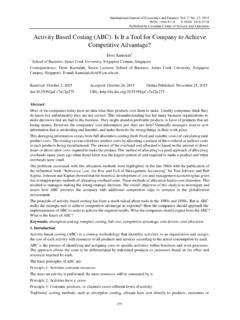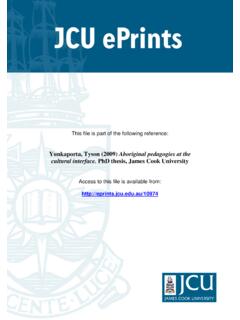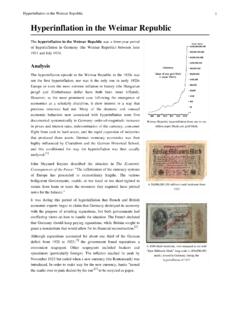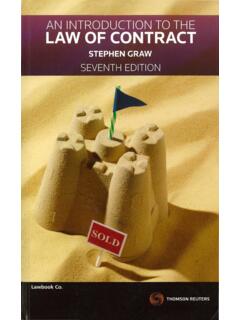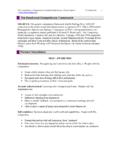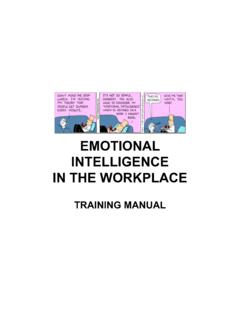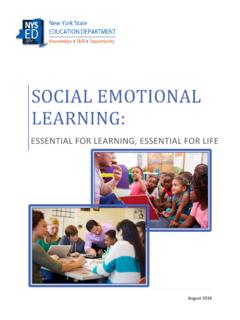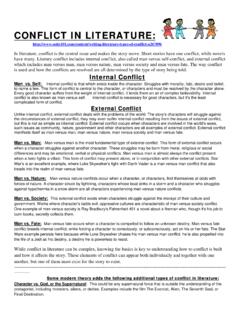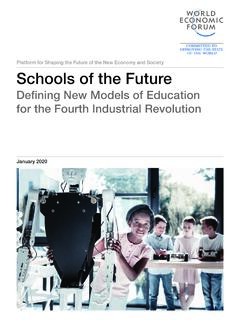Transcription of A Study on Emotional Intelligence At Work Place
1 European Journal of Business and Management ISSN 2222-1905 (Paper) ISSN 2222-2839 (Online) , , 2015 147 A Study on Emotional Intelligence At Work Place Dr. Desti Kannaiah Senior Lecturer, James Cook University, Singapore Dr. R. Shanthi Assistant Professor, Department of Commerce, University of Madras INTRODUCTION Emotional Intelligence is the ability to sense, understand, value and effectively apply the power of emotions as a source of human energy, information, trust, creativity and influence -DANIEL GOLEMAN Emotional Intelligence (EI) must somehow combine two of the three states of mind cognition and affect, or Intelligence and emotion.
2 Emotional Intelligence refers to the ability to perceive, control, and evaluate emotions. Some researchers suggest that Emotional Intelligence can be learned and strengthened, while other claim it is an inborn characteristic. A number of testing instruments have been developed to measure Emotional Intelligence , although the content and approach of each test varies. If a worker has high Emotional Intelligence , he or she is more likely to be able to express his or her emotions in a healthy way, and understand the emotions of those he or she works with, thus enhancing work relationships and performance.
3 Emotional Intelligence is not about being soft! It is a different way of being smart - having the skill to use his or her emotions to help them make choices in the moment and have more effective control over themselves and their impact on others. Emotional Intelligence allows us to think more creatively and to use our emotions to solve problems. Emotional Intelligence probably overlaps to some extent with general Intelligence . The emotionally intelligent person is skilled in four areas: Identifying emotions, using emotions, understanding emotions, and regulating emotions.
4 The term Emotional Intelligence is only a few years old. It originally developed during the 1970s and 80s by the work and writings of psychologists Howard Gardner, Peter Salovey and John Mayer. EI first appeared in 1985 in a doctoral dissertation by Wayne Leon Payne, which he entitled A Study of Emotion: Developing Emotional Intelligence . His thesis on Emotional Intelligence included a framework to enable people to develop Emotional Intelligence . Payne asserted that many of the problems in modern civilization stemmed from a suppression of emotion and that it was possible to learn to become emotionally intelligent.
5 Later it was coined by Daniel Goleman, who wrote the pioneering book on the subject. He actually co-authored it with his wife, Tara, triggered by sitting through many frustrating business meetings with her. Emotional Intelligence then appeared in a series of academic articles authored by John D. Mayer and Peter Salovey (1990, 1993). These publications generated little attention. Two years later, Emotional Intelligence entered the mainstream with Daniel Goleman's(1995) best-seller Emotional Intelligence : Why It Can Matter More Than IQ and subsequent articles in USA Weekend and Time Magazine (October 2, 1995).
6 More recently, Goleman's latest book, Working with Emotional Intelligence (1998), has caught the attention of human resource practitioners. Although the term Emotional Intelligence was not used, it is evident that the groundwork for the research was set in motion long before any official work on Emotional Intelligence . SCOPE OF THE Study The scope of the Study is to increase the employees Emotional Intelligence at work Place and to help in future why some employees are outstanding performers while others are not.
7 Emotional Intelligence calls for European Journal of Business and Management ISSN 2222-1905 (Paper) ISSN 2222-2839 (Online) , , 2015 148 recognizing and understanding of the issues in the organizations on the basis of the results organization can choose a strategy and actions to improve the performance of their employees. NEED FOR THE Study Emotional Intelligence helps the employees to increase their Emotional self-awareness, Emotional expression, creativity, increase tolerance, increase trust and integrity, improve relations within and across the organization and thereby increase the performance of each employee and the organization as a whole.
8 Emotional Intelligence is one of the few key characteristics that gives rise to strategic leaders in organizations . Emotional Intelligence plays a significant role in the organization and becomes an important criterion of evaluation for judgment of an effective employee, increases productivity and trust within and across the organization. OBJECTIVE OF THE Study The objectives of the Study are as follows as To examine the determinants of Emotional Intelligence of employees at work Place To know extent of employees awareness towards Emotional Intelligence REVIEW OF LITERATURE S nchez-Ruiz, Jose, Carlos, Prez-Gonzlez and Petride (2010) Trait Emotional Intelligence profiles of students from different university faculties had examined that the trait Emotional Intelligence (trait EI or trait Emotional self-efficacy)
9 Profiles of 512 students from five university faculties: technical studies, natural sciences, social sciences, arts, and humanities. Using the Trait Emotional Intelligence Questionnaire, researchers hypothesised that (a) social sciences would score higher than technical studies in Emotionality, (b) arts would score higher than technical studies in Emotionality, (c) arts would score lower than technical studies in Self-control, and (d) there would be an interaction between gender and faculty, whereby female students would score higher than male students within the social sciences only.
10 Several other exploratory comparisons were also performed. Results supported hypotheses (a), (b), and (d), but not hypothesis (c), although the differences were in the predicted direction. Nelis, Quoidbach, Mikolajczak and Hansenne (2009) Emotional Intelligence Interventions to Increase Student success focused on the construct of Emotional Intelligence (EI) which refers to the individual differences in the perception, processing, regulation, and utilization of Emotional information. As these differences have been shown to have a significant impact on important life outcomes.



